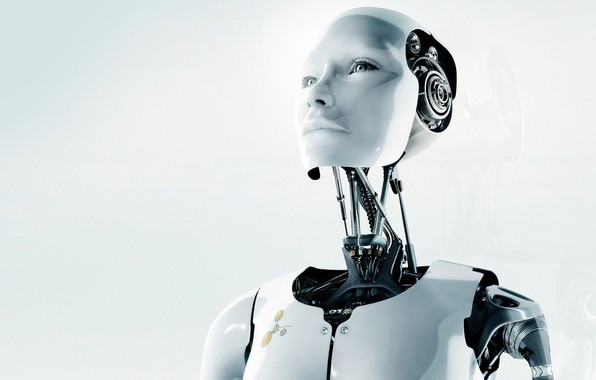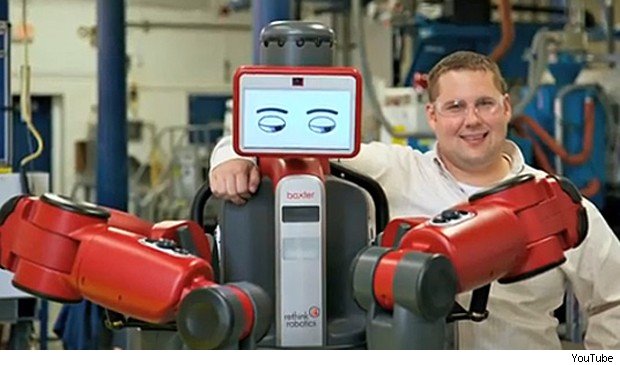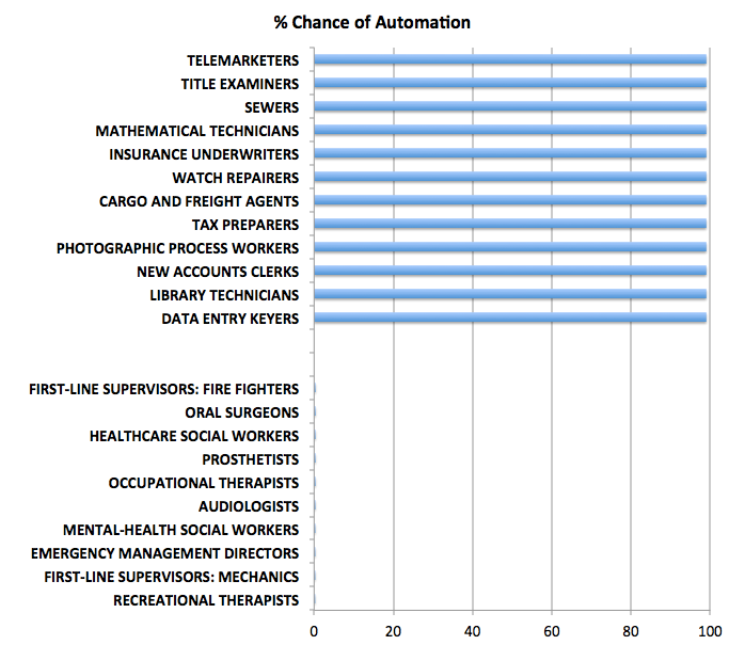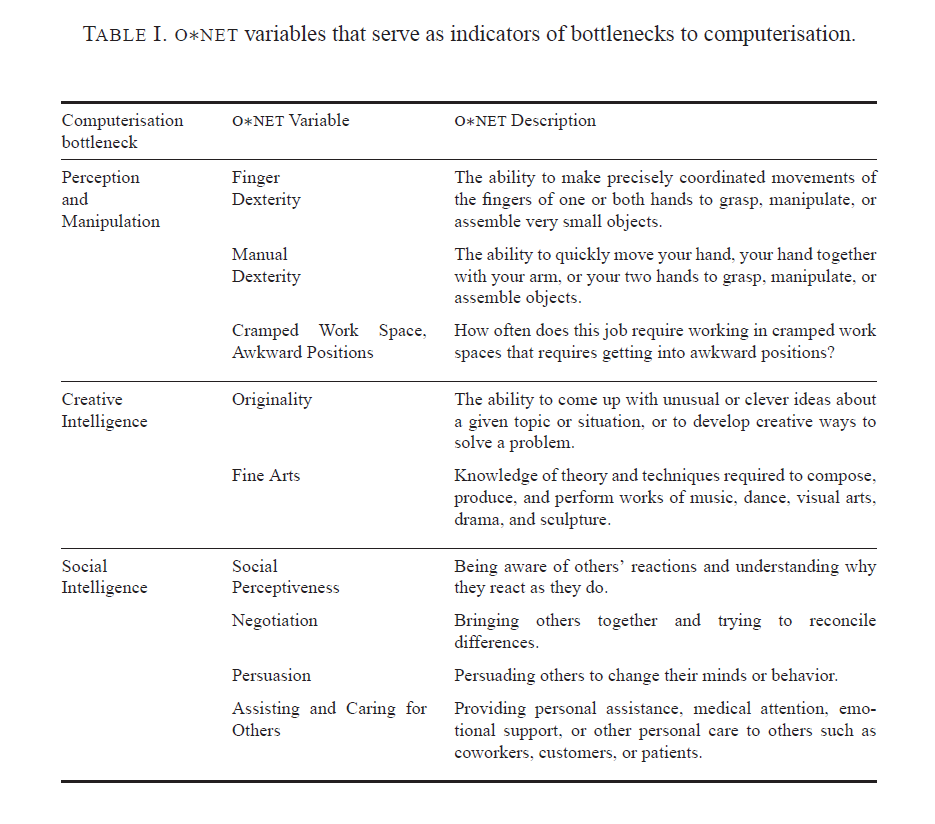Well, I’m back, after deep dives into R programming and statistical modeling. I’d like to offer these links which I’ve bookmarked in recent days. The first four cover a scatter of topics, from impacts of the so-called sharing economy and climate developments to the currency impacts of the more and more certain moves by the US Federal Reserve to increase interest rates in September.
But then I’ve collected a number of useful links on robotics and artificial intelligence.
How the ‘sharing economy’ is upending the travel industry
DS: New York Attorney General Eric Schneiderman last October issued a report finding 72 percent of the reservations on Airbnb going back to 2010 were in violation of city law. What’s the industry doing to address these concerns?
MB: Listen, I think there are a lot of outdated regulations and a lot of outdated laws that were written in a time where you couldn’t possibly imagine the innovation that has come up from the sharing economy, and a lot of those need to be updated to meet the world that we live in today, and I think that’s important. Sometimes you have regulations that are put in place by incumbent industries that didn’t want competition and you have some regulations that were put in place back in the ’60s and ’70s, where you couldn’t imagine any of these things, and so I think sometimes you need to see updates.
So there you go – laws on the books are outdated.
Brain-controlled prosthesis nearly as good as one-finger typing
The goal of all this research is to get thought-controlled prosthetics to people with ALS. Today these people may use an eye-tracking system to direct cursors or a “head mouse” that tracks the movement of the head. Both are fatiguing to use. Neither provides the natural and intuitive control of readings taken directly from the brain.
The U.S. Food and Drug Administration recently gave Shenoy’s team the green light to conduct a pilot clinical trial of their thought-controlled cursor on people with spinal cord injuries.
Jimmy Carter: The U.S. Is an “Oligarchy With Unlimited Political Bribery”
Unfortunately, very apt characterization from a formal standpoint of political science.
What to Expect from El Niño: North America
The only El Niño events in NOAA’s 1950-2015 database comparable in strength to the one now developing occurred in 1982-83 and 1997-98… Like other strong El Niño events, this one will almost certainly last just one winter. But at least for the coming wet season, it holds encouraging odds of well-above average precipitation for California. During a strong El Niño, the subtropical jet stream is energized across the southern U.S., while the polar jet stream tends to stay north of its usual winter position or else consolidate with the subtropical jet. This gives warm, wet Pacific systems a better chance to push northeast into California… Milder and drier a good bet for Pacific Northwest, Northern Plains, western Canada.. Rockies snowfall: The south usually wins out…Thanks to the jet-shifting effects noted above, snowfall tends to be below average in the Northern Rockies and above average in the Southern Rockies during strong El Niños. The north-south split extends to Colorado, where northern resorts such as Steamboat Springs typically lose out to areas like the San Juan and Sangre de Cristo ranges across the southern part of the state. Along the populous Front Range from Denver to Fort Collins, El Niño hikes the odds of a big snowstorm, especially in the spring and autumn. About half of Boulder’s 12” – 14” storms occur during El Niño, and the odds of a 20” or greater storm are quadrupled during El Niño as opposed to La Niña.
According to NOAA, the single most reliable El Niño outcome in the United States, occurring in more than 80% of El Niño events over the last century, is the tendency for wet wintertime conditions along and near the Gulf Coast, thanks to the juiced-up subtropical jet stream.
Emerging market currencies crash on Fed fears and China slump
The currencies of Brazil, Mexico, South Africa and Turkey have all crashed to multi-year lows as investors flee emerging markets and commodity prices crumble.
Robotics and Artificial Intelligence
Some of the most valuable research I’ve found so far on the job and societal impacts of robotics comes from a survey of experts conducted by the Pew Research Internet Project AI, Robotics, and the Future of Jobs,
Some 1,896 experts responded to the following question:
The economic impact of robotic advances and AI—Self-driving cars, intelligent digital agents that can act for you, and robots are advancing rapidly. Will networked, automated, artificial intelligence (AI) applications and robotic devices have displaced more jobs than they have created by 2025?
Half of these experts (48%) envision a future in which robots and digital agents have displaced significant numbers of both blue- and white-collar workers—with many expressing concern that this will lead to vast increases in income inequality, masses of people who are effectively unemployable, and breakdowns in the social order.
The other half of the experts who responded to this survey (52%) expect that technology will not displace more jobs than it creates by 2025. To be sure, this group anticipates that many jobs currently performed by humans will be substantially taken over by robots or digital agents by 2025. But they have faith that human ingenuity will create new jobs, industries, and ways to make a living, just as it has been doing since the dawn of the Industrial Revolution.
Read this – the comments on both sides of this important question are trenchant, important.
The next most useful research comes from a 2011 publication of Brian Arthur in the McKinsey Quarterly The second economy – which is the part of the economy where machines transact just with other machines.
Something deep is going on with information technology, something that goes well beyond the use of computers, social media, and commerce on the Internet. Business processes that once took place among human beings are now being executed electronically. They are taking place in an unseen domain that is strictly digital. On the surface, this shift doesn’t seem particularly consequential—it’s almost something we take for granted. But I believe it is causing a revolution no less important and dramatic than that of the railroads. It is quietly creating a second economy, a digital one.
Twenty years ago, if you went into an airport you would walk up to a counter and present paper tickets to a human being. That person would register you on a computer, notify the flight you’d arrived, and check your luggage in. All this was done by humans. Today, you walk into an airport and look for a machine. You put in a frequent-flier card or credit card, and it takes just three or four seconds to get back a boarding pass, receipt, and luggage tag. What interests me is what happens in those three or four seconds. The moment the card goes in, you are starting a huge conversation conducted entirely among machines. Once your name is recognized, computers are checking your flight status with the airlines, your past travel history, your name with the TSA (and possibly also with the National Security Agency). They are checking your seat choice, your frequent-flier status, and your access to lounges. This unseen, underground conversation is happening among multiple servers talking to other servers, talking to satellites that are talking to computers (possibly in London, where you’re going), and checking with passport control, with foreign immigration, with ongoing connecting flights. And to make sure the aircraft’s weight distribution is fine, the machines are also starting to adjust the passenger count and seating according to whether the fuselage is loaded more heavily at the front or back.
These large and fairly complicated conversations that you’ve triggered occur entirely among things remotely talking to other things: servers, switches, routers, and other Internet and telecommunications devices, updating and shuttling information back and forth. All of this occurs in the few seconds it takes to get your boarding pass back. And even after that happens, if you could see these conversations as flashing lights, they’d still be flashing all over the country for some time, perhaps talking to the flight controllers—starting to say that the flight’s getting ready for departure and to prepare for that…
If I were to look for adjectives to describe this second economy, I’d say it is vast, silent, connected, unseen, and autonomous (meaning that human beings may design it but are not directly involved in running it). It is remotely executing and global, always on, and endlessly configurable. It is concurrent—a great computer expression—which means that everything happens in parallel. It is self-configuring, meaning it constantly reconfigures itself on the fly, and increasingly it is also self-organizing, self-architecting, and self-healing…
If I were to look for adjectives to describe this second economy, I’d say it is vast, silent, connected, unseen, and autonomous (meaning that human beings may design it but are not directly involved in running it). It is remotely executing and global, always on, and endlessly configurable. It is concurrent—a great computer expression—which means that everything happens in parallel. It is self-configuring, meaning it constantly reconfigures itself on the fly, and increasingly it is also self-organizing, self-architecting, and self-healing
I’m interested in how to measure the value of services produced in this “second economy.”
Finally, China’s adoption of robotics seems to signal something – as in this piece about a totally automatic factor for cell phone parts –
China sets up first unmanned factory; all processes are operated by robots
At the workshop of Changying Precision Technology Company in Dongguan, known as the “world factory”, which manufactures cell phone modules, 60 robot arms at 10 production lines polish the modules day .. The technical staff just sits at the computer and monitors through a central control system… In the plant, all the processes are operated by computer- controlled robots, computer numerical control machining equipment, unmanned transport trucks and automated warehouse equipment.






